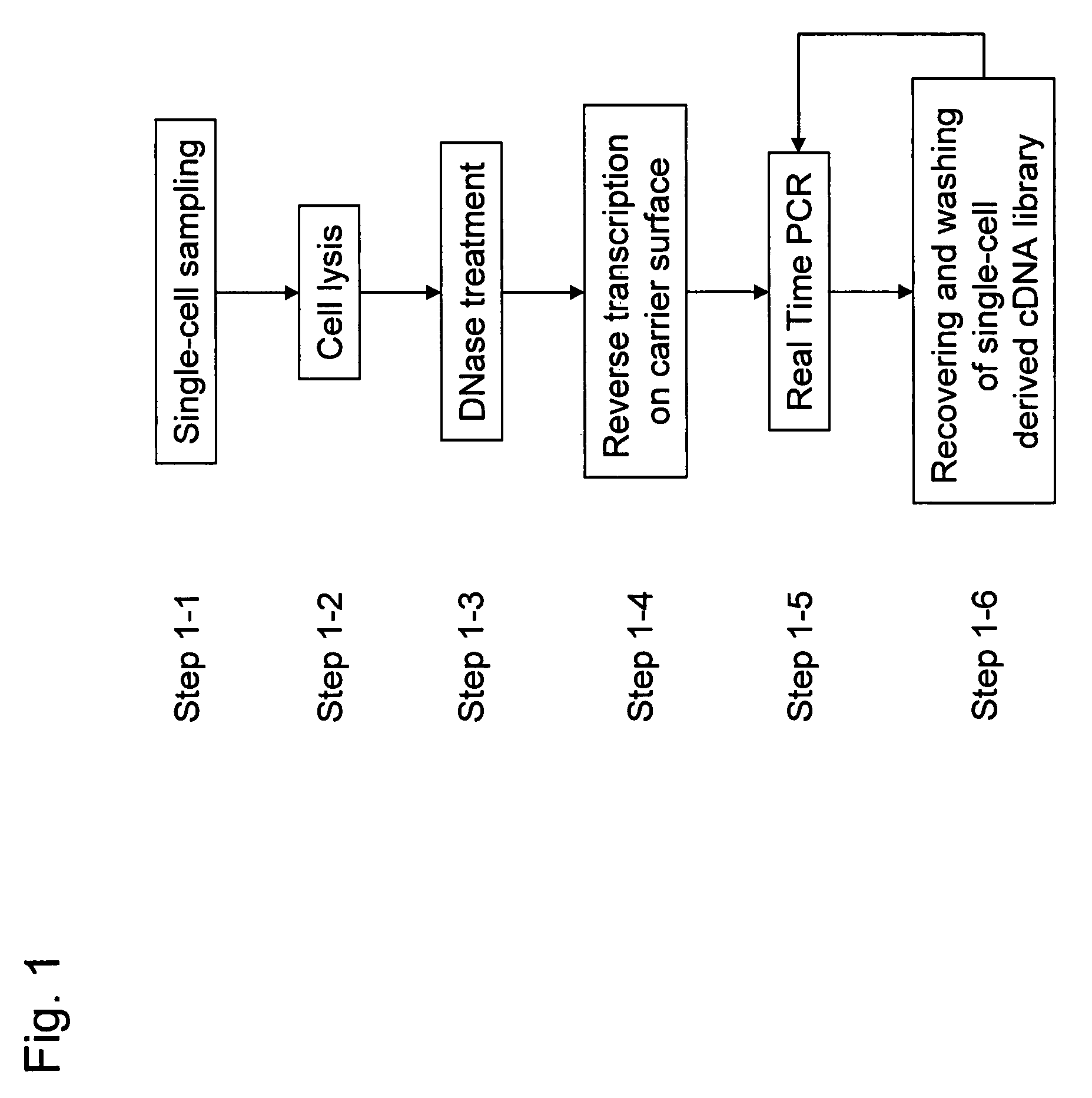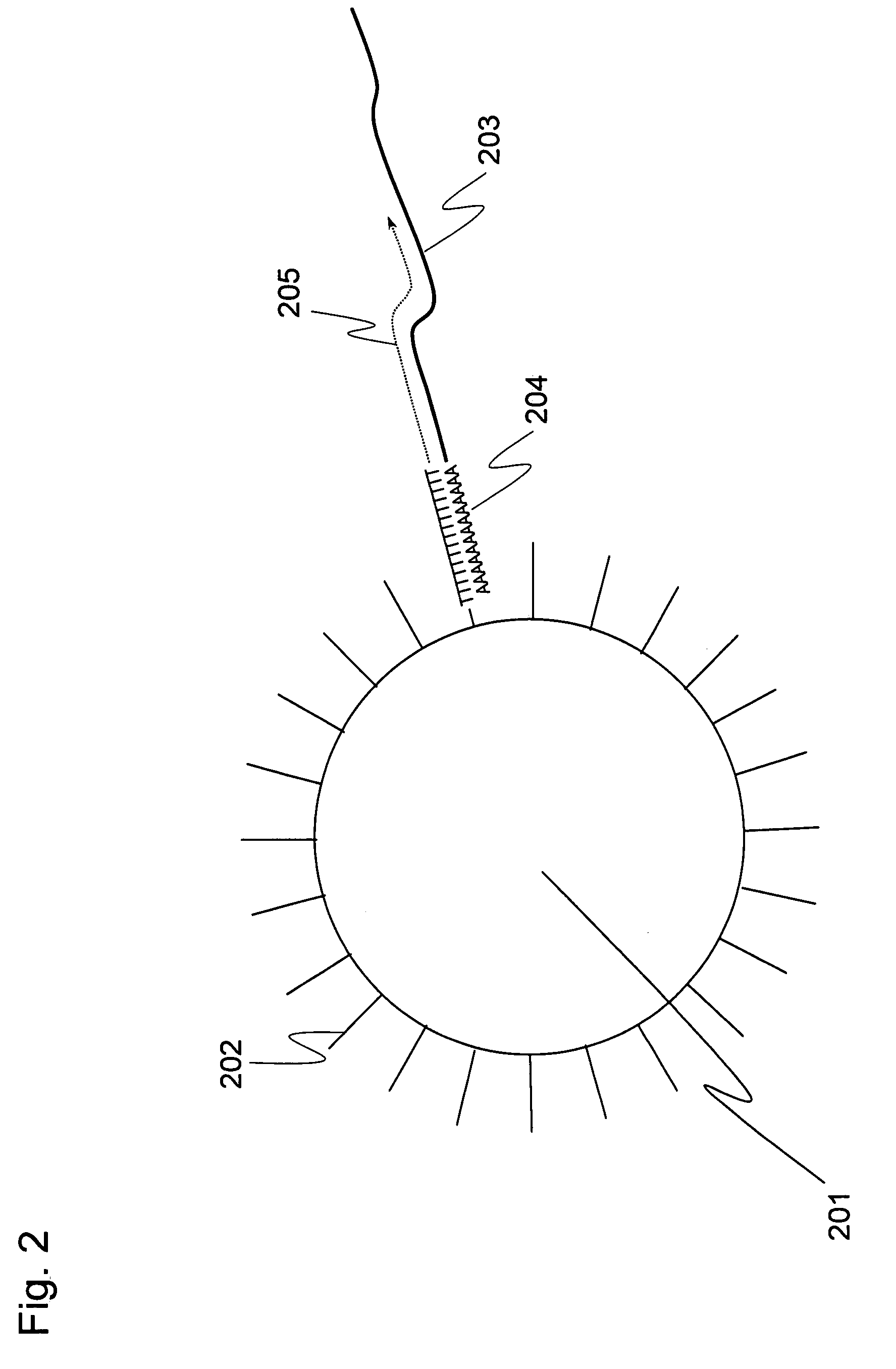Methods for quantitative cDNA analysis in single-cell
a single-cell, quantitative technology, applied in the direction of organic chemistry, biochemistry apparatus and processes, sugar derivatives, etc., can solve the problems of difficult to obtain detailed information of a living organism having dynamical changes, difficult to integrately analyze living activity in a single cell and between cells by conventional gene expression analysis using a plurality of cells, and the amount of mrna contained in a single-cell is extremely low, so as to achieve a high degree of sensitivity
- Summary
- Abstract
- Description
- Claims
- Application Information
AI Technical Summary
Benefits of technology
Problems solved by technology
Method used
Image
Examples
examples
[0093]A plurality of genes was previously selected as analysis objects. How many cDNA molecules were derived from mRNA of each genes and present in a single-cell, which was used as an analysis sample, was determined in accordance with the operations from Step 1-1 to Step 1-6 shown in the flowchart of FIG. 1. To explain more specifically, first a single-cell was sampled (Step 1-1). Subsequently, the cell was lysed (Step 1-2). Genomic DNA of the single-cell was removed by DNase treatment (Step 1-3). Reverse transcription was performed using a carrier having oligo (dT) fixed thereon to prepare a single-cell derived cDNA library fixed onto a carrier (Step 1-4). To improve cDNA synthesis efficiency and minimize variation between samples in preparing the library of the single-cell derived cDNA fixed onto a carrier, Step 1-1 to Step 1-4 were performed in a single tube. Using the library of the single-cell derived cDNA fixed onto a carrier, real-time PCR was performed to determine the expre...
PUM
| Property | Measurement | Unit |
|---|---|---|
| surface area | aaaaa | aaaaa |
| surface area | aaaaa | aaaaa |
| diameter | aaaaa | aaaaa |
Abstract
Description
Claims
Application Information
 Login to View More
Login to View More - R&D
- Intellectual Property
- Life Sciences
- Materials
- Tech Scout
- Unparalleled Data Quality
- Higher Quality Content
- 60% Fewer Hallucinations
Browse by: Latest US Patents, China's latest patents, Technical Efficacy Thesaurus, Application Domain, Technology Topic, Popular Technical Reports.
© 2025 PatSnap. All rights reserved.Legal|Privacy policy|Modern Slavery Act Transparency Statement|Sitemap|About US| Contact US: help@patsnap.com



